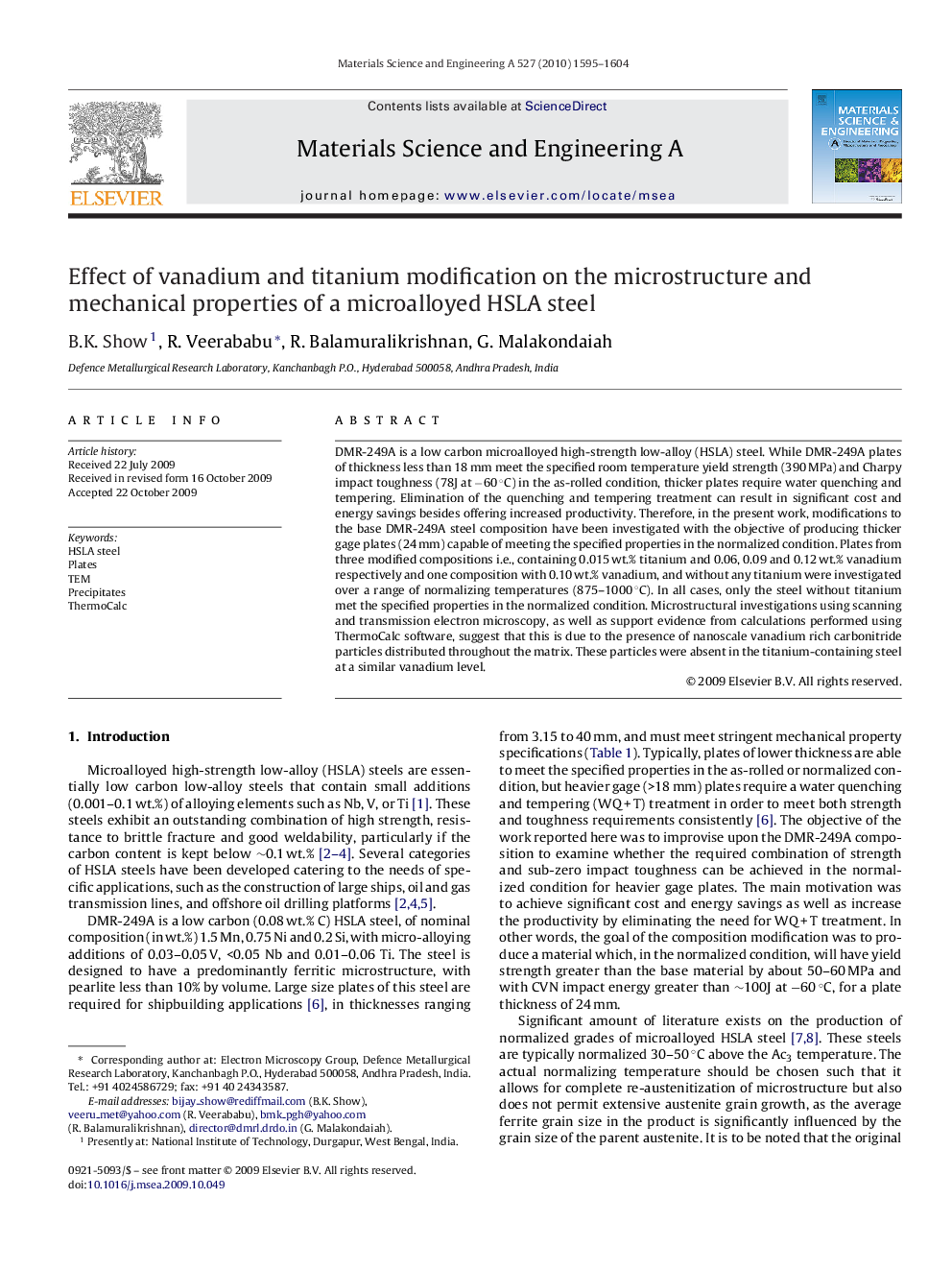| Article ID | Journal | Published Year | Pages | File Type |
|---|---|---|---|---|
| 1579754 | Materials Science and Engineering: A | 2010 | 10 Pages |
DMR-249A is a low carbon microalloyed high-strength low-alloy (HSLA) steel. While DMR-249A plates of thickness less than 18 mm meet the specified room temperature yield strength (390 MPa) and Charpy impact toughness (78J at −60 °C) in the as-rolled condition, thicker plates require water quenching and tempering. Elimination of the quenching and tempering treatment can result in significant cost and energy savings besides offering increased productivity. Therefore, in the present work, modifications to the base DMR-249A steel composition have been investigated with the objective of producing thicker gage plates (24 mm) capable of meeting the specified properties in the normalized condition. Plates from three modified compositions i.e., containing 0.015 wt.% titanium and 0.06, 0.09 and 0.12 wt.% vanadium respectively and one composition with 0.10 wt.% vanadium, and without any titanium were investigated over a range of normalizing temperatures (875–1000 °C). In all cases, only the steel without titanium met the specified properties in the normalized condition. Microstructural investigations using scanning and transmission electron microscopy, as well as support evidence from calculations performed using ThermoCalc software, suggest that this is due to the presence of nanoscale vanadium rich carbonitride particles distributed throughout the matrix. These particles were absent in the titanium-containing steel at a similar vanadium level.
